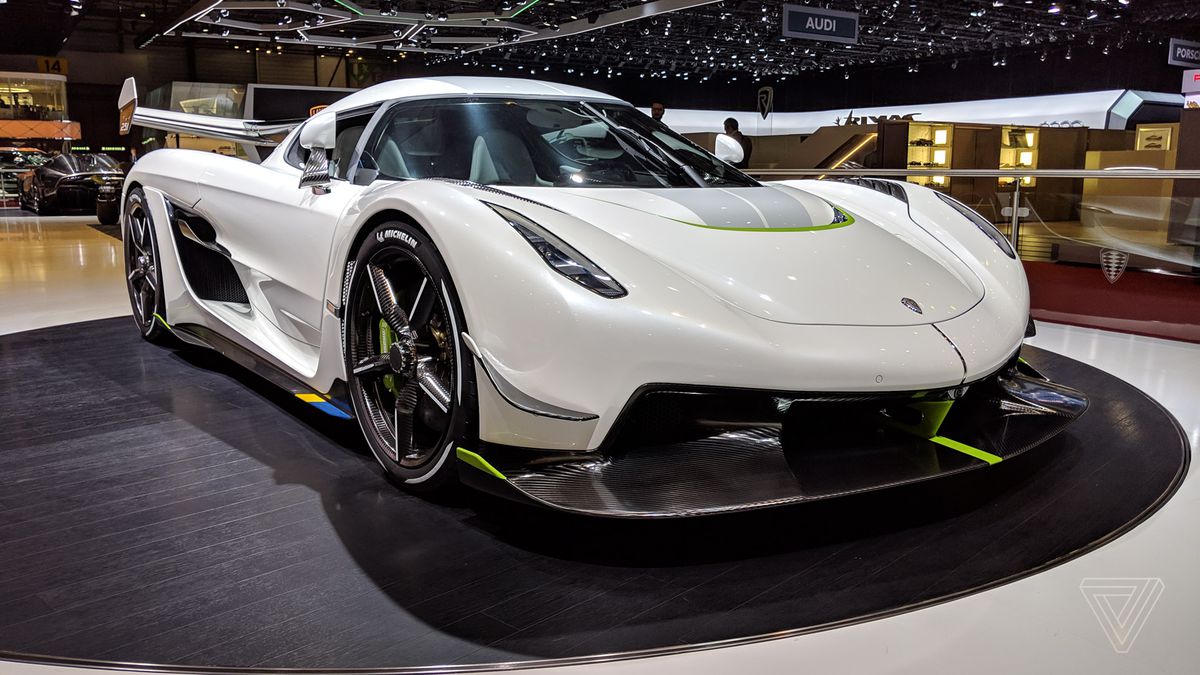/cdn.vox-cdn.com/uploads/chorus_image/image/63197964/koenigsegg_jesko_vladsavov.0.jpg)
It takes a lot for a petrol-fueled car to nudge out all of the hyper electrics that attract eyeballs at the Geneva Motor Show, but Koenigsegg has done it. The new Jesko by Koenigsegg, named after the company founder’s father, is claimed to be the world’s first road-legal 300 mph car. That top speed translates to more than 480 kilometers per hour. To put it in more relatable terms, this car can travel fast enough to cover the length of a football field — doesn’t matter which version of football you prefer — in less than a second. When you think of it in those terms, you’ll probably also realize just how theoretical performance like that is: there aren’t many straight lines in the world long enough to let a person hit such ludicrous speeds.
Koenigsegg is producing only 125 units of the Jesko, with a choice between the so-called top speed version that achieves the headline-grabbing 300 mph and a more track-oriented variant, the latter of which is on show in Geneva this week. Despite a mind-melting $2.8 million starting price before tax, 90 of the cars had already been pre-sold before the Jesko’s official unveiling, and Koenigsegg’s been doing brisk business during the show, with expectations that the company will leave Switzerland with all its Jesko orders filled.
:no_upscale()/cdn.vox-cdn.com/uploads/chorus_asset/file/15944881/koenigsegg_geneva19_vladsavov23.jpg)
Built around a redesigned 5-liter twin-turbo V8 engine, the Koenigsegg Jesko can hit 1,280 horsepower with regular gasoline or 1,600 horsepower on E85 biofuel. It has the world’s lightest crankshaft (weighing 12.5 kilograms / 27.5 pounds), which is milled from a single billet of steel and helps the engine work more efficiently. There’s also an acoustic benefit to the new crankshaft design, which Koenigsegg says helps to produce an “even more visceral engine sound.”
A new nine-speed Light Speed Transmission system has been designed in-house, promising ”gear changes [that] occur in virtually zero time between adjacent gears.” It’s accompanied by an Ultimate Power On Demand predictive gear-changing technology that will ensure “instant, prolific power that’s always optimised and always available, allowing maximum acceleration for overtaking, corner exits, etc.”
:no_upscale()/cdn.vox-cdn.com/uploads/chorus_asset/file/15944861/koenigsegg_geneva19_vladsavov4.jpg)
Koenigsegg has added active rear steering to the Jesko, which helps improve cornering and reduce the car’s turning circle. At low speeds, the rear wheels are steered counter to the front ones, while at high speeds, they turn in the same direction. (Determining when to do what is entirely automated by the car.) The same can be said for the active rear wing as well, and there’s a lot of other adaptive engineering all around the Jesko. It’s a car with racing smarts, even if it’s not running the latest and greatest infotainment software.
For all its engineering excellence and spec supremacy, the Koenigsegg Jesko is an attraction at the Geneva Motor Show this week simply because it looks stunning. None of the super, hyper, ultra — or, in the case of the Jesko, mega because it’s capable of more than a megawatt of power — cars at the exhibition ever actually move, and so it’s down to their design to do all the talking. The Jesko looks every bit the road racer that it’s intended to be. Aerodynamics dictate the signature expansive windshield up front, but it’s been redesigned for greater visibility. The carbon fiber chassis has also been made more accommodating with increased legroom and headroom. Combining those design priorities of speed and comfort with a measure of visual flair has produced the assertive beauty on show in Geneva. Oh, and the hardtop is detachable.
The extremely lucky humans ordering a Jesko this week will have to be patient, as production of the cars is planned for late 2020, with deliveries expected in early 2021.
Photography by Vlad Savov / The Verge
